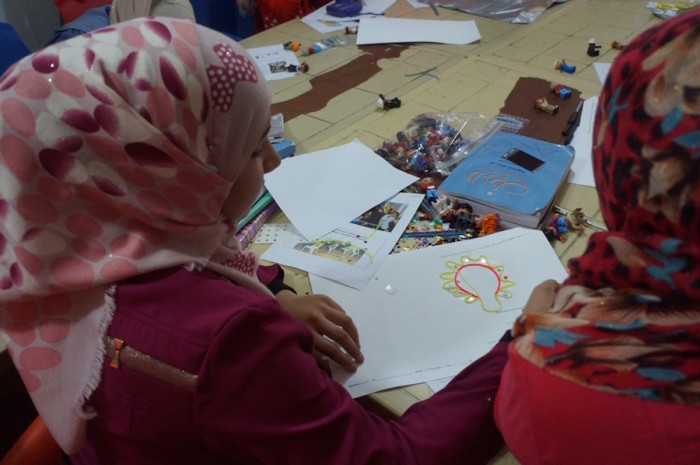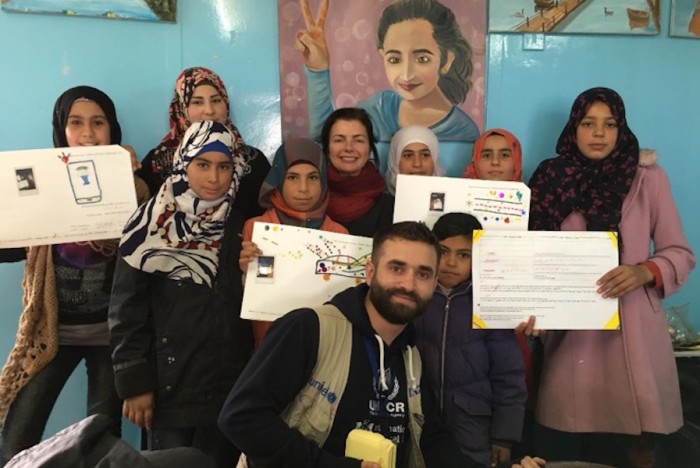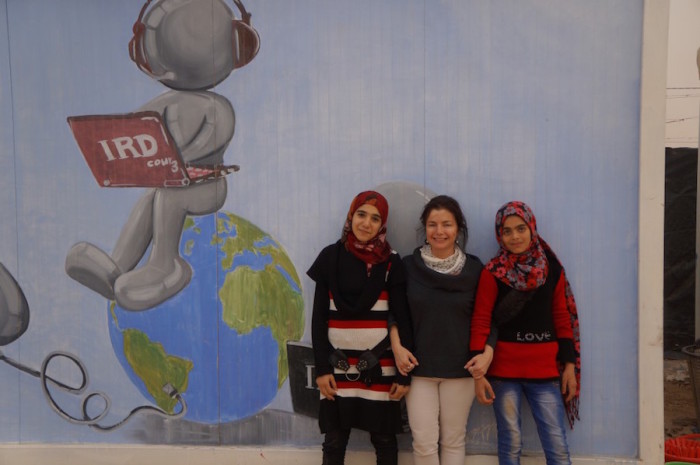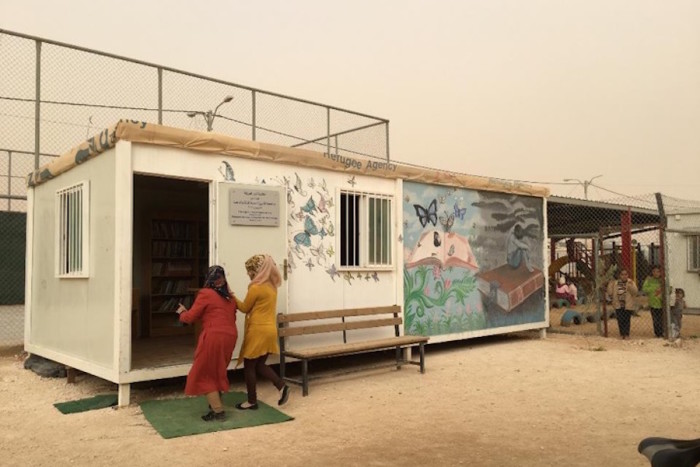
“This is a magic road,” says Karen Fisher, a professor at the Information School (iSchool) at the University of Washington. “You can stand on it and it can take you anywhere you would need to go.”
After returning from her second trip to the Za’atari Refugee Camp in Jordan, Fisher holds up a drawing from a workshop she opened at the camp in November 2015. The prompt driving the workshop was meant to unleash creativity of the teens she worked with: “If you could create anything you wanted — magical genius devices — what would you do?”
On March 4, Fisher will return to the camp to help the young people build the prototypes for their devices, and bring storytelling tools to Syrian families at the camp who have lost nearly everything, including family records and histories, she says.
Za’atari Refugee Camp, just 18 miles south of the Syrian border, is the second largest refugee camp in the world and home to at least 79,000 refugees — including around 30,000 youth, based on recent estimates from local non-governmental organizations (NGOs). Fisher, working in partnership with the United Nations High Commissioner for Refugees and other NGOs, says that due to a lack of education resources and teachers, only about half of the camp youth attend school.
Yet amidst what she and others have called the worst humanitarian crisis since World War II, are around 200 young people she worked with who inspired her with their tremendous resilience, innovation and optimism.
In a workshop facilitating the design of a “magical genius device,” the students chose team names such as Technology Giants, Youth of the Future, Springs of Dreams, The Dreams of the Girls Of Syria, The Mermaids of Paradise and Freedom’s Girls.

In three two-hour narrative storytelling sessions, Fisher asked around 48 youth to draw a picture of a time they were able to help someone through information or technology.
“It was extremely powerful,” she remembers.
Some drew themselves putting out a fire or helping someone injured cross the street in the immediate aftermath of Syria’s bombings.
“The young people of Za’atari have been through so much,” says Katya Yefimova, a PhD student at the iSchool and a research assistant for the Za’atari camp-based project. “This project helps uncover their perspectives and show their community in a new light.”
Unsurprisingly, in a separate workshop, many of the 150 youth participating in her “Genius Magician” project chose to channel their imaginations and creativity into solutions for much more immediate needs. From magic glasses that can identify the source of illness in someone’s body, to a communications and social media device that is also a magic heater warming families through Jordan’s cold winter nights — caring for family and elders was a common theme, says Fisher.
Fisher has worked with immigrant and refugee youth from all over the world using STEM education and youth participants as “infomediary” experts of their cultural experience for her research.
Along with dwindling educational opportunities and literacy for girls, Fisher encountered many young women and girls at the camp who were in a position where they must help educate their families.

She shows me another picture drawn by a teen who participated in the narrative storytelling intensive.
“Here she’s talking about helping her mother with her mobile, and here she’s explaining helping her sisters with her letters, learning how to read,” she explains.
This phenomenon coincides with the estimate that only about 50 percent of young people attend school at the camp. Fisher says there is “mega potential” to provide more resources and educational opportunities, and believes library engagement and storytelling are especially important for girls and young women at the camp.

Fisher will be using the StoryCorps app to capture and archive Syrian culture and family histories. When she returns to Za’atari in March, she will host interviewing workshops with the youth to design interview questions and find people within the Za’atari community who want to share their stories.
“As we prototype the methodology in the coming weeks, we will figure out the best way to save and store the interviews for longevity, while considering factors of access, privacy and security,” she says.
During her last trip in November, Fisher saw just a few underutilized library caravans throughout 12 districts of the camp. In addition to helping the youth build their dream devices and collect community oral history, Fisher is enlisting expertise from NGOs and information technologists to enhance the library caravans. She is hoping these investments and StoryCorps archiving will boost connectivity and literacy among the camp’s residents, with an eye towards long-term local impact.
“We want libraries to be community focus points that are run by the refugees and relevant to the needs and futures of refugees,” says Fisher.
To get involved or learn more about Karen Fisher’s work, please visit www.infome.uw.edu or email her directly at fisher@uw.edu.
A version of this post first appeared on Flip the Media.
Editor’s note: This story has been updated since its original publication in The Globalist to clarify that StoryCorps apps will be used at Za’atari Refugee Camp to document family histories in the community. Originally, it was stated that StoryCorps booths would be set up to capture stories, which is not the case.

